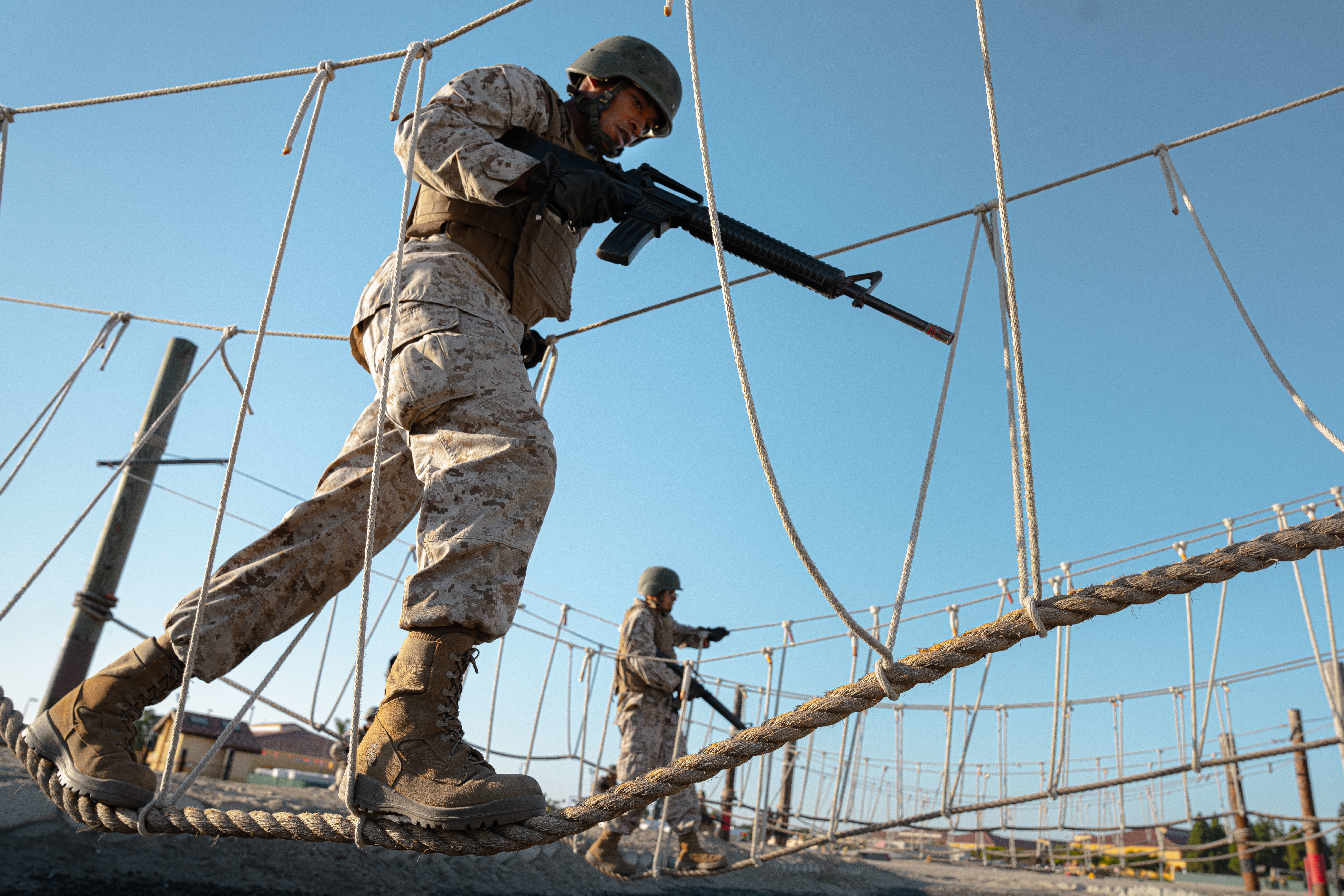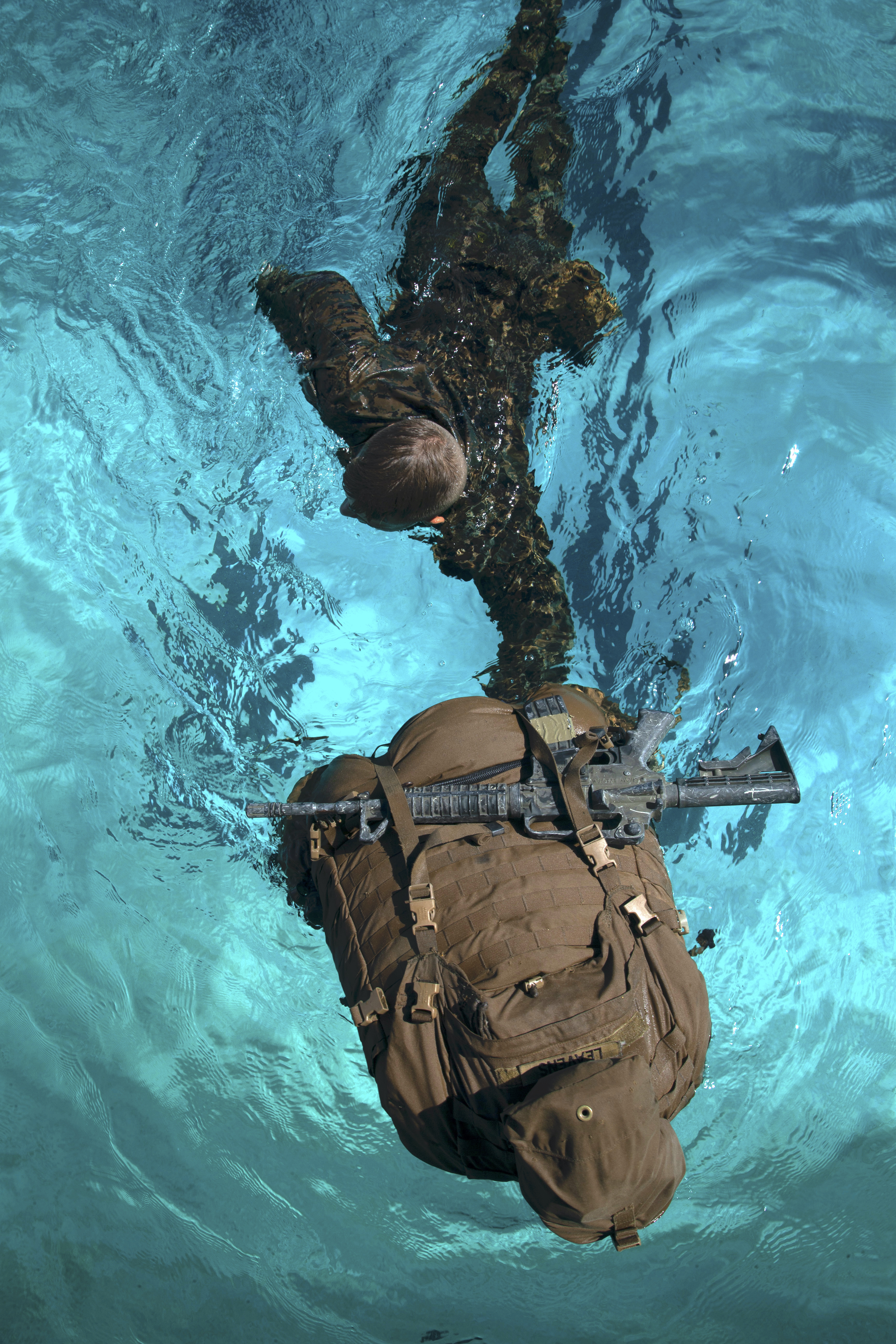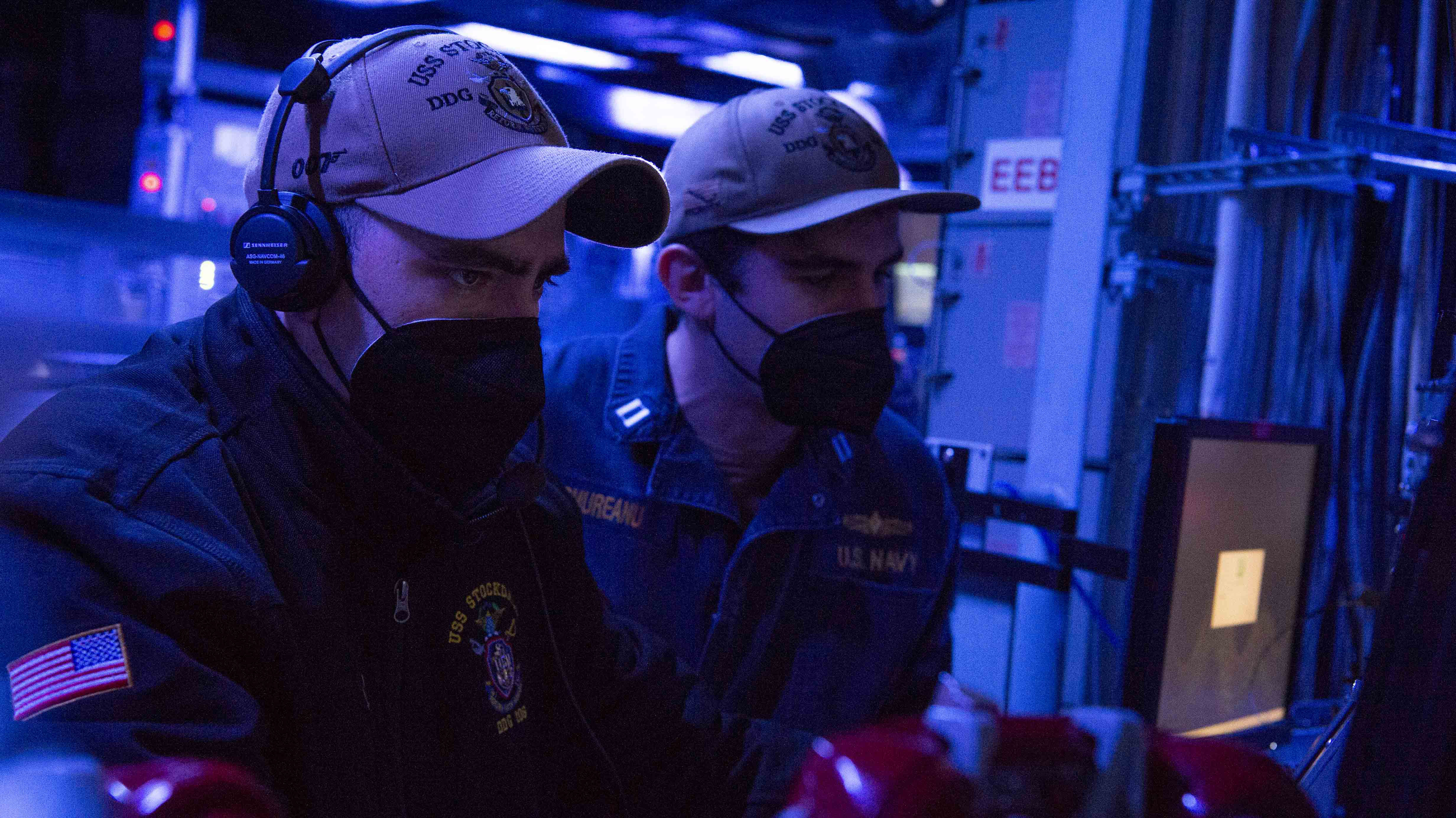
The speed China has expanded its military has changed the way the Navy and Marine Corps must approach training, service leadership said during a panel at the Interservice/Industry Training, Simulation and Education Conference Tuesday.
Marine Corps Commandant Gen. David Berger and Chief of Naval Operations Adm. Mike Gilday took the stage to discuss how the two sea services are adapting training models as they strive to compete with the country’s adversaries and meet the demands of a more technological age.
“We cannot be comfortable going at a comfortable deliberate pace anymore,” Berger said. “I think we could in the past. We cannot do that going forward.”
China, which the Pentagon has identified as the United States’ top military challenge, is pushing the U.S., Berger said, which is new. China has more people and more ships, which means training has to teach Marines and sailors how to think.
Both Berger and Gilday said the repetitive training model is still important, but training needs to move beyond that mindset. For Berger, that means training simulations need to put leaders in positions where they must learn to respond and adapt depending on the situation, including being able to talk to leadership.
Gilday spoke about the human performance aspect of “reps and sets,” something the Marine Corps’ Human Performance Branch is also looking at as part of the Marine Corps Talent Management 2030, USNI News recently reported.
While repetitive exercises are still a crucial component of training, what Gilday would like to see better identification of deficiencies so that sailors can improve.
“What we’re really after is warfighting proficiency, which reps and sets is an element of that,” he said.
In looking at training, the exercises that the fleet performs need to be based on the physical environments, as well as data-driven, Gilday said, adding that they need to be informed by how the U.S. fights as well as how its adversaries fight. They also need to be reliable and have a recording capability, he said.

Using an analytical framework when approaching training can help the Navy figure out what works and what does not, Gilday said.
But even as the Navy and Marine Corps train, sometimes together, they need to be able to try and think like the adversary, Berger said. That can be difficult because the Marine or sailor is taught under the culture of the Marine Corps or Navy.
“We need help creating a force-on-force construct that allows us to train against each other. Free-thinking but replicating the adversary, we want to plug into the model. We don’t have that yet,” he said. “We need it.”
Training also needs to account for the human aspect of service members. Take education, as an example, Berger said, which he identified as an area where the Marine Corps is moving too slowly.
Currently, Marines who show up on the same day for an educational program graduate together on the same day. That does not account for individuality in learning styles or encourage people to take on more educational challenges, the commandant said.
Aviation schooling is a model that could be adapted. Those who enter flight school on the same day may graduate on different timelines depending on how well they learn, he said.
Berger also highlighted the need to develop a baseline for tracking human performance and training, pointing to the Peloton networked exercise machines as an example. When a person uses one of the bikes, they can log into their profile, even if they are using a bike at a hotel. Being able to take a profile from place to place, or in the military’s case unit to unit, can help speed up the training process so Marines or sailors would not have to start over at a new unit, Berger said.

With training also comes recruitment, something the Marine Corps lays out in Talent Management 2030. But this also applies to civilian employees, Gilday said.
Right now, in the area of cyber, a person needs a four-year degree to get a job. But there are people, particularly focused on hacking, who might not earn that degree. The Navy needs to be able to adapt in order to find talent that might be overlooked, Gilday said.
The Marine Corps is also looking at recruiting, Berger said, but its challenge is not losing the reason a person might want to join the force. It is often for the culture and ethos, he said, not to develop skills.
Still, young Marines are now entering the force already digitally savvy, which means they can be connected with opportunities that would allow them to develop skills like cyber while also receiving the desire to serve, the commandant said.
The Navy is also looking at those inside the force to see who might have certain aptitudes for different careers, Gilday said, using cyber as an example.
The Department of the Navy is also looking to shape the force to be more diverse, looking at race, ethnicity and gender, but also different life experiences, he said. Both services need that diversity in order to maintain their sailors and Marines and prevent them from seeking other service branches or the civilian workforce.
“I think the Navy and Marine Corps [have] the opportunity to be the most diverse services in the Department of Defense, and I really think that we’re working hard to change the way we attract and recruit talent,” Gilday said.





